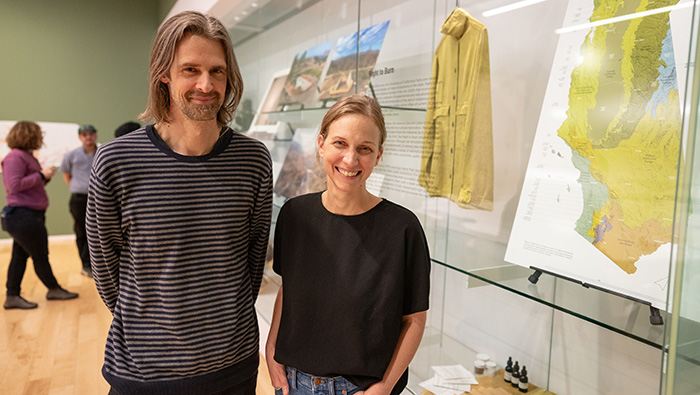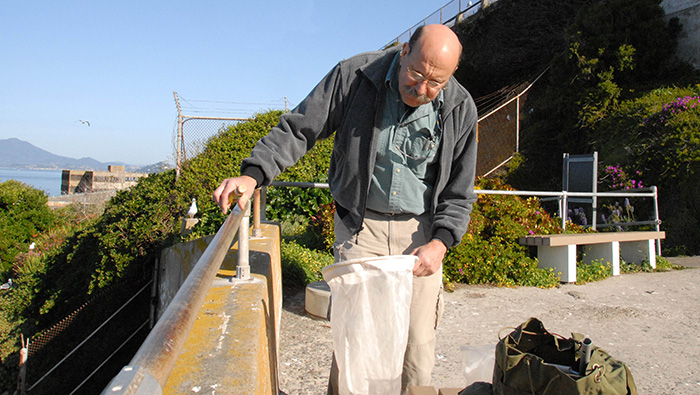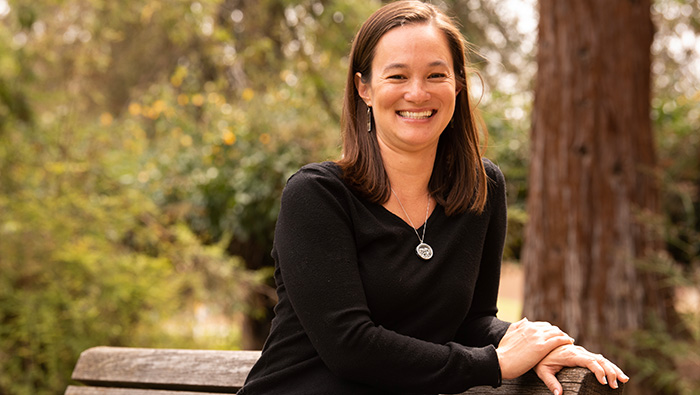
What Is the Environmental Cost of Fast Shipping?
Consumers spent more than $600 billion online in the U.S. in 2019, up 14 percent from the previous year. Each year, the share of e-commerce sales grows by double digits. All of that online consumption can play a huge role in our environmental footprint, explained Miguel Jaller, co-director of the Sustainable Freight Research Center at UC Davis’ Institute of Transportation Studies. Jaller researches the movement of goods and measures its environmental impact. Freight alone accounts for a quarter of greenhouse gas emissions in California.
“Consumers need to acknowledge that just a click of their mouse has physical and environmental repercussions,” Jaller said.
Jaller said in most cases, the faster we want our packages delivered, the more impact our orders have on the environment. Fast shipping increases what’s called “last mile” travel, getting a package delivered that last mile to your doorstep. He said shipping loses efficiency when you cannot combine as many orders as possible on the same truck. Jaller compared it to mass transit.
“Consolidation is what drives better efficiency,” Jaller said. “That’s why public transit is better than everybody using their own cars — you are consolidating a lot of trips in one train or bus. The more packages you can consolidate in one vehicle, the less resources you’re using.”
But in order to meet consumer demand for same-day delivery or delivery within a few hours, companies prioritize shipping speed over system efficiency. Trucks are underutilized, delivering only a small number of packages. In some cases, companies have begun to use regular passenger vehicles to deliver goods, with workers that may not have training in logistics. More passenger cars also create more congestion in cities, resulting in more greenhouse gas emissions.
The COVID caveat
During the initial coronavirus stay-at-home orders, Jaller said e-commerce increased an estimated 30 percent, as online buying became the only way to access some goods. More consumers also switched to online grocery deliveries. But Jaller said the increase in purchases may not have resulted in an increased carbon footprint. Several factors account for that, including that most major online retailers like Amazon stopped offering fast shipping, at least temporarily.
“During the initial phase of the pandemic, we saw those options go away either because companies didn’t have the ability to do those fast deliveries or because they chose to prioritize some other type of shipments at the expense of these luxuries for the consumer,” Jaller said.
Companies prioritized medical supplies over consumer goods. The pandemic also disrupted supply chains, with shortages of drivers and warehouse workers. Shipping on products imported from China also came to a halt. All of that also meant less traffic on the road, which had environmental advantages.
“Trucks were able to travel faster and more efficiently, parking for deliveries was easier and city street congestion decreased because there weren’t as many people out shopping,” said Jaller. “So even though e-commerce consumption increased, emissions were likely less because of decreased overall traffic.”
Consumers and companies have role to play
Coronavirus or not, e-commerce will likely remain a growing part of our carbon footprint, but consumers and retailers can take steps to reduce its environmental impact, said Jaller.
For consumers, the most obvious step is to avoid fast shipping — if it’s an option. Jaller argued that shoppers also need to be a lot more rational about their purchases online and avoid impulse buying. Shop slower and think ahead about what you really need in order to avoid returns or the need to make the carbon-intensive choice of same- or next-day delivery. If you can get everything you need delivered on a regular basis, companies can plan and distribute more efficiently.
Companies can also take steps to be more transparent about the environmental impact of their deliveries, by offering customers a “greener delivery.”
“It would be good if companies can educate consumers about the differences because right now the consumer may only see that all delivery options are free, so why would they choose something that takes longer?” Jaller said.









